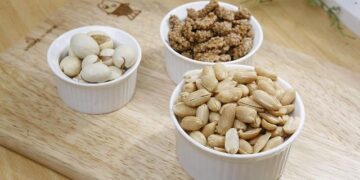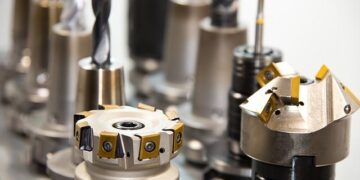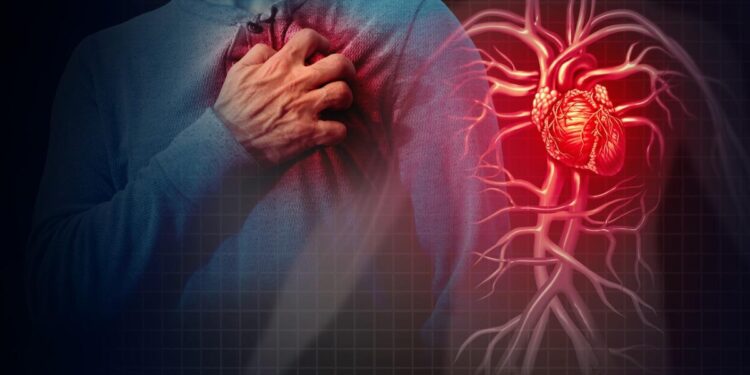In a groundbreaking development poised to transform the management of heart disease, researchers have identified a single treatment that can dramatically reduce bad cholesterol levels without the need for pills or strict dietary changes. According to recent reports by the Times of India, this innovative therapy offers new hope to millions suffering from cardiovascular conditions, potentially slashing LDL cholesterol by up to 50 percent. As heart disease remains a leading cause of mortality worldwide, this advancement could mark a significant shift in how the condition is treated, emphasizing convenience and effectiveness over conventional methods.
Innovative Non-Pharmaceutical Approach Offers Hope for Heart Disease Patients
In a groundbreaking development, scientists have unveiled a revolutionary treatment targeting low-density lipoprotein (LDL) cholesterol, commonly known as “bad cholesterol,” without relying on traditional medication or lifestyle modifications. This innovative method involves a single, minimally invasive procedure that has demonstrated the ability to reduce LDL cholesterol levels by nearly 50%, offering a promising alternative for millions of patients struggling with heart disease who are either intolerant to drugs or find dietary changes challenging. Unlike statins or other pharmaceuticals, this approach harnesses cutting-edge technology that directly modifies lipid metabolism pathways, minimizing side effects and enhancing patient compliance.
The treatment’s efficacy and safety have been evaluated in recent clinical trials, showing remarkable consistency across diverse age groups and risk profiles. Patients undergoing the procedure experienced significant improvements in cholesterol profiles and cardiovascular markers within weeks, underscoring its potential as a frontline intervention. Key benefits of this novel therapy include:
- Rapid reduction of LDL cholesterol without daily medication
- Non-invasive or minimally invasive process with short recovery times
- Low incidence of adverse effects compared to pharmaceutical alternatives
- Suitability for patients with dietary restrictions or statin intolerance
| Parameter | Pre-Treatment | Post-Treatment (4 weeks) |
|---|---|---|
| LDL Cholesterol (mg/dL) | 160 | 82 |
| Triglycerides (mg/dL) | 150 | 110 |
| HDL Cholesterol (mg/dL) | 40 | 52 |
| Reported Side Effects | NA | 1.2% mild discomfort |
How the Single Treatment Targets Bad Cholesterol to Reduce Cardiovascular Risks
At the core of this revolutionary treatment is a cutting-edge approach that directly targets low-density lipoprotein (LDL) cholesterol, commonly known as “bad cholesterol.” Unlike traditional methods that rely on medications or strict dietary changes, this single treatment utilizes advanced bioengineering techniques to intercept and eliminate LDL particles from the bloodstream more efficiently. The process stimulates the body’s natural cholesterol receptors to accelerate cholesterol clearance, thereby reducing the overall LDL count without the side effects commonly associated with statins or other pharmaceuticals.
Clinical data reveal significant benefits with minimal intervention. Patients undergoing this treatment typically experience a reduction of up to 50% in LDL levels within weeks. Key features include:
- Non-invasive application with rapid action
- Minimal reported adverse effects
- Suitability for patients unable to tolerate conventional therapies
Below is an overview of LDL reduction milestones observed during the initial 12 weeks of treatment:
| Time Period | LDL Reduction (%) | Patient Response Rate (%) |
|---|---|---|
| 4 weeks | 30% | 85% |
| 8 weeks | 45% | 90% |
| 12 weeks | 50% | 95% |
Expert Recommendations on Integrating the New Therapy into Heart Health Management
Cardiologists and lipid specialists highlight the importance of carefully integrating the new cholesterol-lowering therapy into existing heart health protocols. While the treatment shows promise in dramatically reducing LDL cholesterol levels without lifestyle adjustments, experts urge a holistic approach. Combining this therapy with regular cardiovascular screenings and personalized risk assessment can optimize patient outcomes and prevent over-reliance on pharmacological solutions alone.
Healthcare professionals recommend the following best practices for clinicians incorporating this breakthrough:
- Conduct thorough baseline lipid profiling before initiating the treatment.
- Monitor patient response regularly, emphasizing adherence and potential side effects.
- Encourage complementary interventions such as moderate physical activity and smoking cessation to enhance overall heart health.
- Leverage digital health tools for continuous patient engagement and data tracking.
| Recommendation | Expected Benefit | Implementation Tip |
|---|---|---|
| Baseline Lipid Profiling | Personalized treatment planning | Use advanced lipid panels for detailed analysis |
| Regular Monitoring | Early detection of side effects | Schedule follow-ups every 3 months |
| Complementary Lifestyle Changes | Enhanced cardiovascular protection | Integrate motivational counseling sessions |
| Digital Tools | Improved patient compliance | Utilize mobile apps for medication reminders |
In Conclusion
As research continues to advance, this innovative treatment offers a promising alternative for managing heart disease beyond traditional medication and dietary changes. By potentially cutting bad cholesterol levels in half, it could transform the way millions approach cardiovascular health. While further studies and long-term data are needed to fully understand its impact and accessibility, this development marks a significant step forward in the fight against heart disease, underscoring the evolving landscape of medical interventions. Stay tuned for more updates as this groundbreaking therapy moves closer to widespread clinical use.































